VARIOUS ARTISTS / “In A Sentimental Mood”
Duke Ellington wrote “In A Sentimental Mood” and recorded the song with his orchestra in 1935. The song has been covered literally hundreds of times and would have been a true classic even if on September 28, 1962 Duke had not collaborated with John Coltrane to produce the classic arrangement of a classic song.
What a classic collaboration—yeah, I know, classic song, classic collaboration, classic arrangement, I’m kind of over using the word classic but in this case it’s accurate to do so. Once the Duke Ellington/John Coltrane album was released on Impulse Records, their arrangement de facto became the way most people thought of the song. That opening piano figure was not part of the original composition; it is now though. But there’s more to it than Duke’s elegant addition.
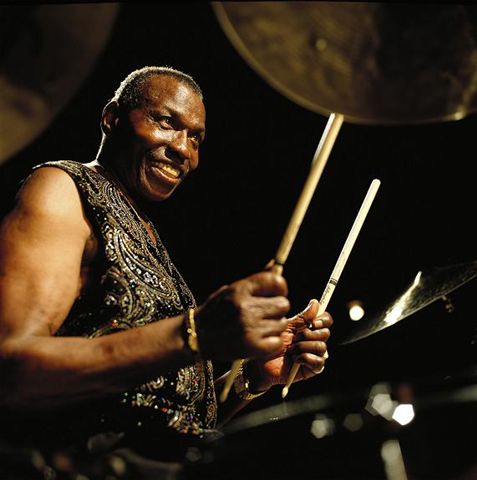 I think Elvin Jones is the secret to the success of this arrangement. I don’t mean to take away from or ignore the immensity of either Duke at the piano or Trane on tenor. They were both undeniably great on that date but the magic ingredient that really lifts the song past previous versions and, for that matter, past most subsequent versions is the complex rhythms of Elvin Jones.
Most ballads don’t give a drummer much to do except perhaps demonstrate sensitive dexterity with brushes. Elvin Jones does a whole lot more than simply swish, swish in the background. Jones offers a master thesis on how to make a ballad more than a slow number. It’s the complexity of Jones polyrhythms that make the Duke/Trane version of “In A Sentimental Mood” thoroughly peerless. Jones provides the edge that elevates the arrangement far, far beyond schmaltz.
I think Elvin Jones is the secret to the success of this arrangement. I don’t mean to take away from or ignore the immensity of either Duke at the piano or Trane on tenor. They were both undeniably great on that date but the magic ingredient that really lifts the song past previous versions and, for that matter, past most subsequent versions is the complex rhythms of Elvin Jones.
Most ballads don’t give a drummer much to do except perhaps demonstrate sensitive dexterity with brushes. Elvin Jones does a whole lot more than simply swish, swish in the background. Jones offers a master thesis on how to make a ballad more than a slow number. It’s the complexity of Jones polyrhythms that make the Duke/Trane version of “In A Sentimental Mood” thoroughly peerless. Jones provides the edge that elevates the arrangement far, far beyond schmaltz.
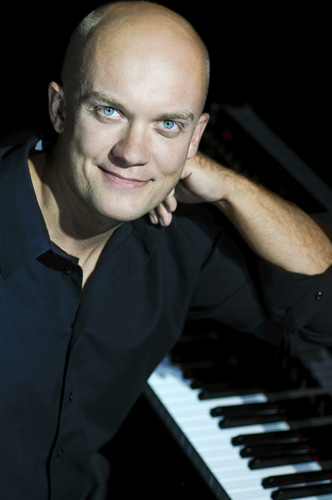 Pianist David Hahn is a cancer survivor.
Pianist David Hahn is a cancer survivor.
I recorded this album during the fall and winter of 2006, while undergoing 6 months of chemotherapy for Hodgkin's Lymphoma. I'd been diagnosed in July of that year, and the news came as a real shock. I'd known that I was sick, but at age 25, I never thought that I could have the dreaded "C" word. I don't know anybody that goes through cancer that doesn't have some extreme emotions about it. Anger, fear, disgust, depression, pride, anxiety... For me, cancer really brought out a lot of emotions that I'd never felt before. I had, I guess you could say, an excess of emotions during that time. I've spent most of my life playing piano in restaurants and parties. I'd spent the year before cancer playing on a cruise ship in Europe and the Caribbean. I have to admit, though, sometimes a gig is just a gig. I can't say that every thing, every line, every phrase, that I've played during every gig is something really inspired. In truth, I'd say that before being diagnosed with cancer, I'd lost a sense of direction with my music and my career. When treatments really got rough, and they did really get rough, I went to my piano. When some people get angry, or frustrated, or scared, maybe they go to a punching bag, or take a walk, or put on their favorite movie. My release was to play the same songs I'd played for years in restaurants, on the ocean, in practice rooms. Looking back, and now that I really sit and listen to these recordings, it occurs to me that something really special, something really inspired, came out of me in these recordings. I can hear the fear, and the frustration, and the depression, and the hope, and the gratitude for life that I felt during treatment. These are really special recordings for me. They represent an intensely emotional time during my life. They represent my feelings about being diagnosed with cancer so much more than I could ever have expressed with words. These recordings were therapeutic for me, and they still are.I believe the depth of his solo is not about technique but rather about sensibility, the way he examines the structure of the song, works the harmonies, alters the melody. I believe he is remembering in the most demanding sense of the word, not simply recalling but plummeting into the depths of his being to offer up the most meaningful moments available to him in the midst of improvisation. It’s a raw and intimate offering. Available on the self produced album, Straight Ahead.
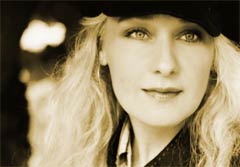 Danish vocalist Caecilie Norby follows with a dreamy essay that looks forward rather than backward, i.e. to me she sounds like she is looking at someone and imaging future sentimental moments with that person or about that person. The tip off is the ending. The majority of the song had been done sotto voice, subtle inflections but when she gets to the end, she pulls out all the stops: look at me, don’t leave without considering me. And, boy, does she capture our attention with those beautifully strong, unwavering high notes. Taken from a European live album called London/Paris.
Danish vocalist Caecilie Norby follows with a dreamy essay that looks forward rather than backward, i.e. to me she sounds like she is looking at someone and imaging future sentimental moments with that person or about that person. The tip off is the ending. The majority of the song had been done sotto voice, subtle inflections but when she gets to the end, she pulls out all the stops: look at me, don’t leave without considering me. And, boy, does she capture our attention with those beautifully strong, unwavering high notes. Taken from a European live album called London/Paris.
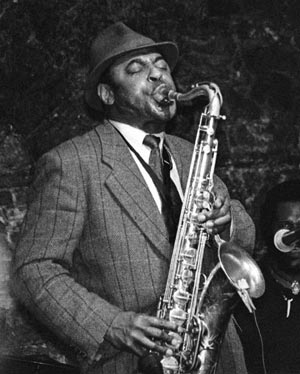 Archie Shepp is the polar opposite. Not one ounce of romance or sentimentality here. Most people will initially hear this as angry; you may even wonder why in the world did Kalamu include this bull-breaking-china version. Well, I believe some of our most truly sentimental moments are the result of great tumult. Archie is at the top of his game on this live version. And though it may not sound like it, he’s actually playing the changes before breaking into the melody.
Archie’s opening sax solo is a stunning display of unfettered feelings. Is there any more sentimental moment than a man standing uncowed before a fire squad, roaring out his defiance, sounding like Che ordering his captors to shoot. How many memories must be rushing through you even as you curse out the soldiers who are about to shoot you! The moment of defiant death is perhaps the most sentimental moment any life can offer. Archie presents us the last memory of a revolutionary.
I remember when I first heard Archie’s version on the album Live In San Francisco. I was stunned, especially when Archie segued into the melody and played it at the very edge of his abilities. Those saxophone high notes sounded like a man on tiptoes, straining with all his might, reaching for the stars. He might not make it but everybody knows he reached.
Archie Shepp is the polar opposite. Not one ounce of romance or sentimentality here. Most people will initially hear this as angry; you may even wonder why in the world did Kalamu include this bull-breaking-china version. Well, I believe some of our most truly sentimental moments are the result of great tumult. Archie is at the top of his game on this live version. And though it may not sound like it, he’s actually playing the changes before breaking into the melody.
Archie’s opening sax solo is a stunning display of unfettered feelings. Is there any more sentimental moment than a man standing uncowed before a fire squad, roaring out his defiance, sounding like Che ordering his captors to shoot. How many memories must be rushing through you even as you curse out the soldiers who are about to shoot you! The moment of defiant death is perhaps the most sentimental moment any life can offer. Archie presents us the last memory of a revolutionary.
I remember when I first heard Archie’s version on the album Live In San Francisco. I was stunned, especially when Archie segued into the melody and played it at the very edge of his abilities. Those saxophone high notes sounded like a man on tiptoes, straining with all his might, reaching for the stars. He might not make it but everybody knows he reached.
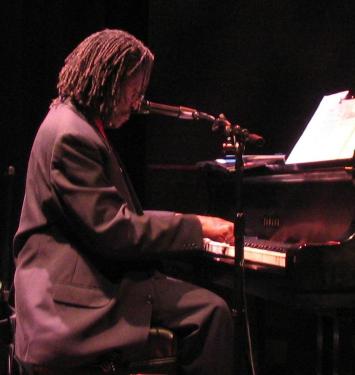 And then Andy Bey eases in. I have a metaphor for this version also: the afterglow of totally satisfying love making when you both are totally vulnerable and one half of the couple slowly begins to speak to the other about how deeply felt this embrace has been.
Bey is playing the piano, accompanying himself with both strength and sensitivity. Listen to how Bey massages the bottom of the piano; it’s power without pounding, passion without the pretense of omnipotence. The gentleness of a heavyweight champ protectively cradling his newborn child.
Bey tone is near perfect: part interior monologue, part trembling promise. I was most impressed by the deliberate and unhurried pacing. I know it’s a musical performance but damn it deserves an academy award. Available on Ballads, Blues & Bey.
And then Andy Bey eases in. I have a metaphor for this version also: the afterglow of totally satisfying love making when you both are totally vulnerable and one half of the couple slowly begins to speak to the other about how deeply felt this embrace has been.
Bey is playing the piano, accompanying himself with both strength and sensitivity. Listen to how Bey massages the bottom of the piano; it’s power without pounding, passion without the pretense of omnipotence. The gentleness of a heavyweight champ protectively cradling his newborn child.
Bey tone is near perfect: part interior monologue, part trembling promise. I was most impressed by the deliberate and unhurried pacing. I know it’s a musical performance but damn it deserves an academy award. Available on Ballads, Blues & Bey.
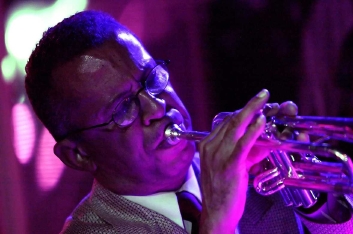 Trumpeter Tom Brown follows Bey with a quartet performance that reaches back to the transitional period between swing and bebop. He’s even using an old-style mute on his horn. I could hear the bravado of Roy Eldridge in what Browne does here. Frankly, I never thought of Tom “Funkin’ For Jamaica” Browne in this league of jazz players but he’s right there. Not only does he play with flair, his breathing and the bright dynamics he brings to the phrases make for an uplifting experience. Available on The Tom Browne Collection.
Trumpeter Tom Brown follows Bey with a quartet performance that reaches back to the transitional period between swing and bebop. He’s even using an old-style mute on his horn. I could hear the bravado of Roy Eldridge in what Browne does here. Frankly, I never thought of Tom “Funkin’ For Jamaica” Browne in this league of jazz players but he’s right there. Not only does he play with flair, his breathing and the bright dynamics he brings to the phrases make for an uplifting experience. Available on The Tom Browne Collection.
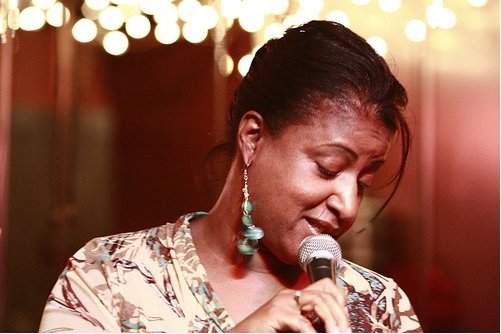 Vanessa Rubin comes up with an attractive enigma in her brisk-paced big band take. Part of me wishes she would have slowed it down but then I am also really taken with the way she floats atop the rush. It’s like she’s surfing. The waves of sound are crashing but she’s upright, with just a slight lean riding the song to shore. And it works. From Ms. Rubin's album Pastiche.
Vanessa Rubin comes up with an attractive enigma in her brisk-paced big band take. Part of me wishes she would have slowed it down but then I am also really taken with the way she floats atop the rush. It’s like she’s surfing. The waves of sound are crashing but she’s upright, with just a slight lean riding the song to shore. And it works. From Ms. Rubin's album Pastiche.
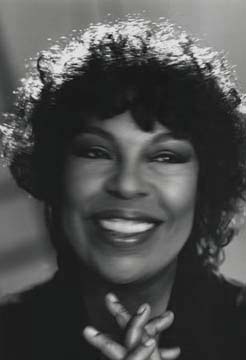 We close with Roberta Flack, an old school diva injecting a hip hop flavor onto this classic ballad. Again, I’m not sure how it these off-beat approaches are done with such great effect but I do know that what makes them work are the relaxed way the singers deliver the goods. Nobody can be more relaxed with a love song than Roberta Flack even when there’s all that Brazilian percussion in the background. From her late period albums, Roberta.
So, that’s my mixtape for this week building on a classic version of a classic song, “In A Sentimental Mood.”
—Kalamu ya Salaam
We close with Roberta Flack, an old school diva injecting a hip hop flavor onto this classic ballad. Again, I’m not sure how it these off-beat approaches are done with such great effect but I do know that what makes them work are the relaxed way the singers deliver the goods. Nobody can be more relaxed with a love song than Roberta Flack even when there’s all that Brazilian percussion in the background. From her late period albums, Roberta.
So, that’s my mixtape for this week building on a classic version of a classic song, “In A Sentimental Mood.”
—Kalamu ya Salaam
This entry was posted on Monday, October 6th, 2008 at 12:50 am and is filed under Classic. You can follow any responses to this entry through the RSS 2.0 feed. You can leave a response, or trackback from your own site.
One Response to “VARIOUS ARTISTS / “In A Sentimental Mood””
October 6th, 2008 at 11:49 am
I’ve seen Duke Ellington way back in my early 20’s and all I can say is that he is simply captivating.
Leave a Reply
| top |